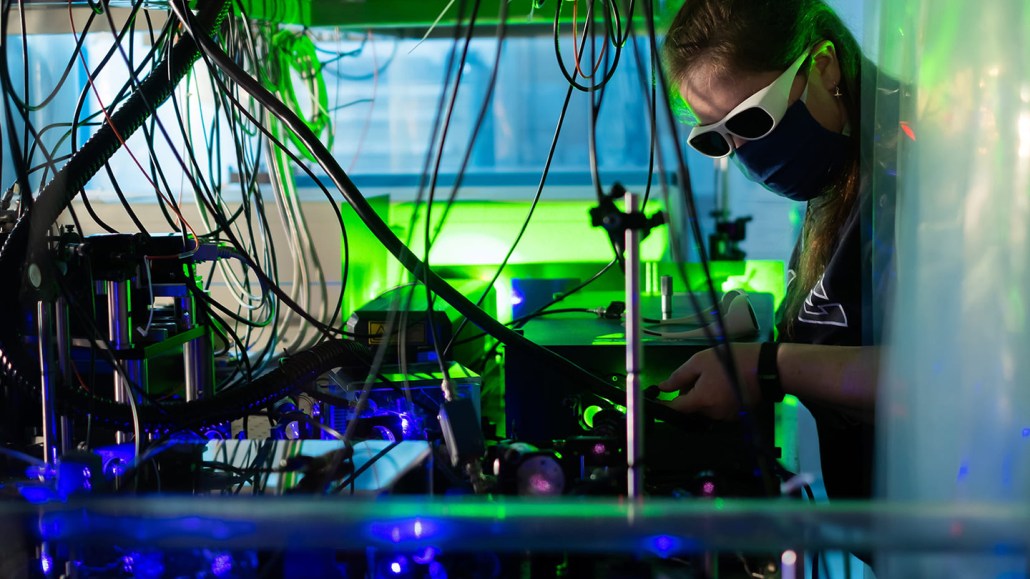
Using magnets, physicists can pin a laser-cooled plasma (experiment shown) in one place for up to half a millisecond — about 10 times longer than it would otherwise last.
Jeff Fitlow/Rice University

Using magnets, physicists can pin a laser-cooled plasma (experiment shown) in one place for up to half a millisecond — about 10 times longer than it would otherwise last.
Jeff Fitlow/Rice University